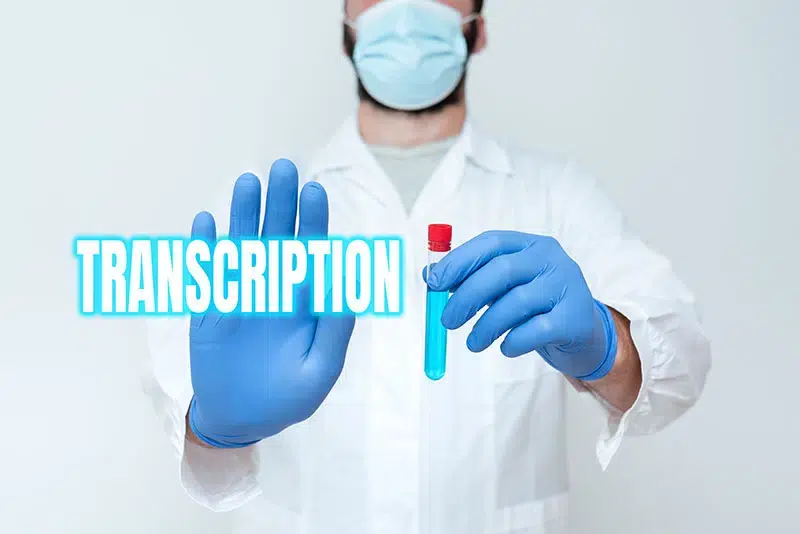
Table of Contents
Pathologists handle various types of data such as lab reports, patient records, diagnostic reports, and autopsy reports. To ensure accurate diagnoses, pathologists examine these documents thoroughly. They rely on outsourcing medical transcription for effective record-keeping, guaranteeing timely and accurate reports that indicate any inaudible or inconsistent transcriptions.
Importance of Pathology Transcription
Pathology transcription must be accurately done; crucial diagnostic information must be carefully recorded and transcribed to provide quality patient care. Pathologists and laboratory workers subject medical materials like tissues, cells, and physiological fluids to diagnostic tests. The transcription process involves transforming the test results into standardized reports that serve as the basis for patient diagnosis, treatment selection, and illness management. These reports provide doctors with essential information on cellular abnormalities, disease progression, and prognostic indicators. It empowers them to make treatment decisions for their patients. Transcribing pathology reports also facilitates seamless communication and collaboration among healthcare professionals, ensuring efficient dissemination of critical information for improved patient outcomes.
Challenges in Transcribing Pathology Reports
However, there are challenges associated with transcribing pathology reports, which can impact patient care:
- Technical and linguistic difficulties: Pathology reports contain intricate diagnoses, complex medical language, and detailed explanations of cellular or tissue anomalies. Transcribers must possess a comprehensive understanding of medical terminology and the ability to accurately interpret and translate pathological findings.
- Time sensitivity: Prompt transcription is crucial in healthcare to avoid hindering patient treatment and decision-making. Fast turnaround times for pathology findings are often necessary to enable timely diagnosis and treatment. Transcribers must strike a balance between speed and accuracy to ensure that the reports are transcribed and delivered within the specified timeframe.
- Low-quality audio: Medical transcriptionists often encounter poor audio quality in recordings made by healthcare professionals. This poses a challenge as it hampers the transcriptionist’s ability to comprehend the content fully. Factors such as overlapping dialogue, background noise, and disorganized speech contribute to poor audio quality.
- Concerns about voice recognition software: Speech recognition software can pose significant challenges when transcribing medical records. The pronunciation of medical terms may vary among medical professionals from different racial and cultural backgrounds. The software’s inability to differentiate between these variations and accurately record them can lead to subpar transcription.
- Missing or inaccurate data: Accurate patient information is crucial for developing reliable pathology records. Incomplete or inaccurate patient demographic information provided by physicians can pose a problem. Additionally, healthcare institutions may withhold information if they have doubts about its validity. This uncertainty affects turnaround times for transcriptions and may require manual correction of reports at the hospital more frequently.
- Inadequate verification: It is essential to verify every piece of information twice during the revision process. This is particularly important when evaluating medical dose recommendations. Similar-sounding or similarly spelled names run the risk of being wrongly transcribed, which can adversely affect the patient’s medical record and care. Double-checking is imperative, and a thorough review of the material is recommended to prevent costly errors.
Pathology transcription serves as a vital link between diagnostic techniques and patient care, enabling medical research advancements, precise diagnoses, efficient therapies, and improved patient outcomes. Despite the challenges posed by technical complexity, time constraints, quality control and evolving technology, dedicated professionals in the field work to overcome these barriers. They strive to ensure that accurate pathology results are delivered on time, contributing to enhanced patient care. Addressing these issues and making substantial investments in reliable transcription systems will be crucial in providing high-quality, patient-centred care as healthcare continues to evolve.
Medical research, precise diagnoses, efficient therapies, and improved patient care are all made possible by accurate pathology transcription and documentation. Despite the difficulties presented by technical complexity, time constraints, quality control, and developing technology, committed transcription professionals work to get through these barriers. They strive to make sure the pathology results are precise, delivered on time, and help improve patient outcomes. Addressing these issues and making substantial investments in reliable transcribing systems will be essential to deliver high-quality, patient-centred care as healthcare continues to evolve.

